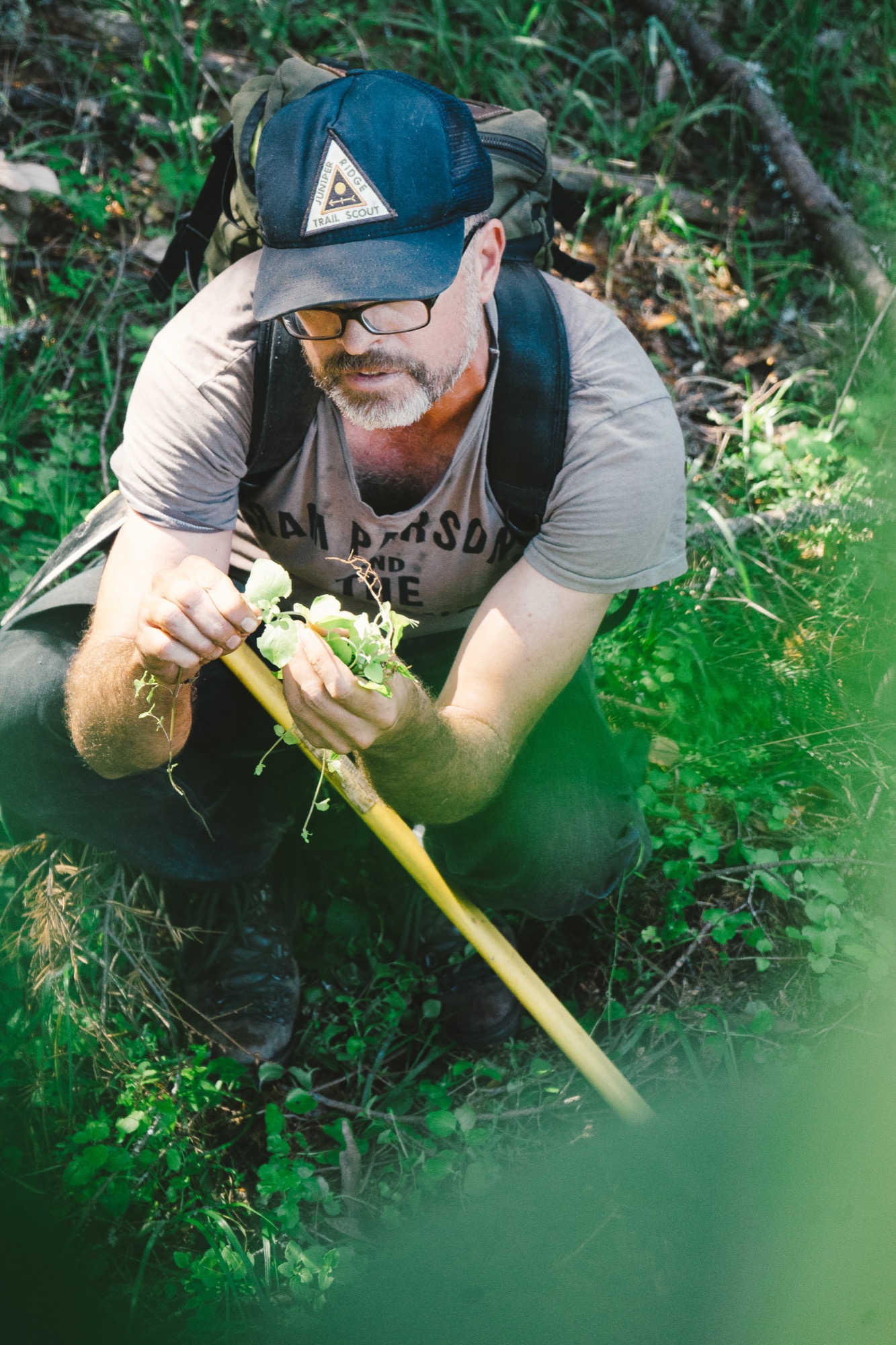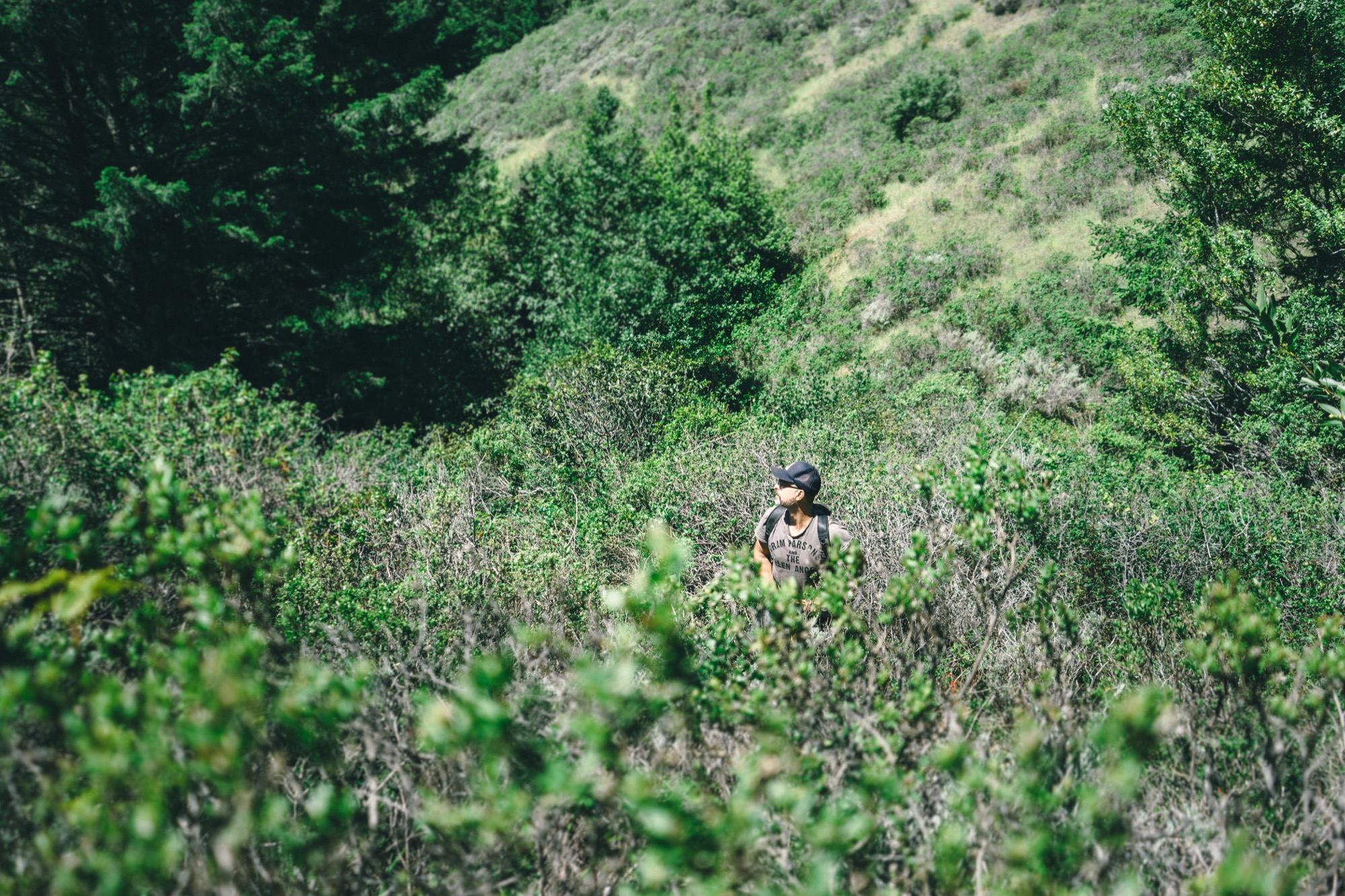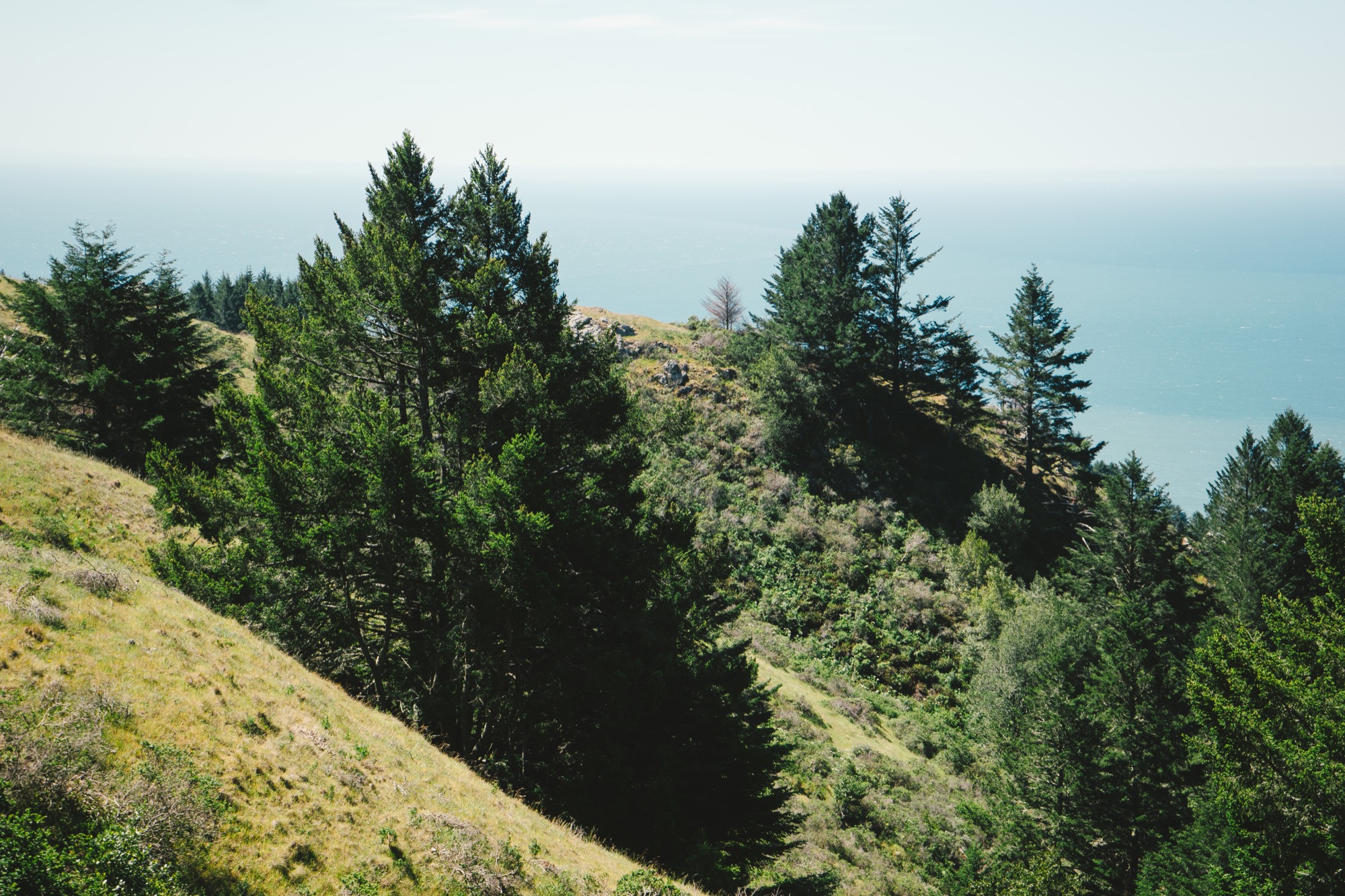The Fragrance of "Out There"
Hall Newbegin is out there. Upon first meeting him, I didn’t expect it. He seemed jovial, unintimidating, and mild-mannered. But in the first five minutes of our conversation he used the phrase “out there” eight times — “Part of what I wanted to do was to just be ‘out there’ . . . Being ‘out there’ just centered me . . . Being ‘out there’ saved me as person . . . I had no idea where this was going, but I loved being ‘out there.’ ”
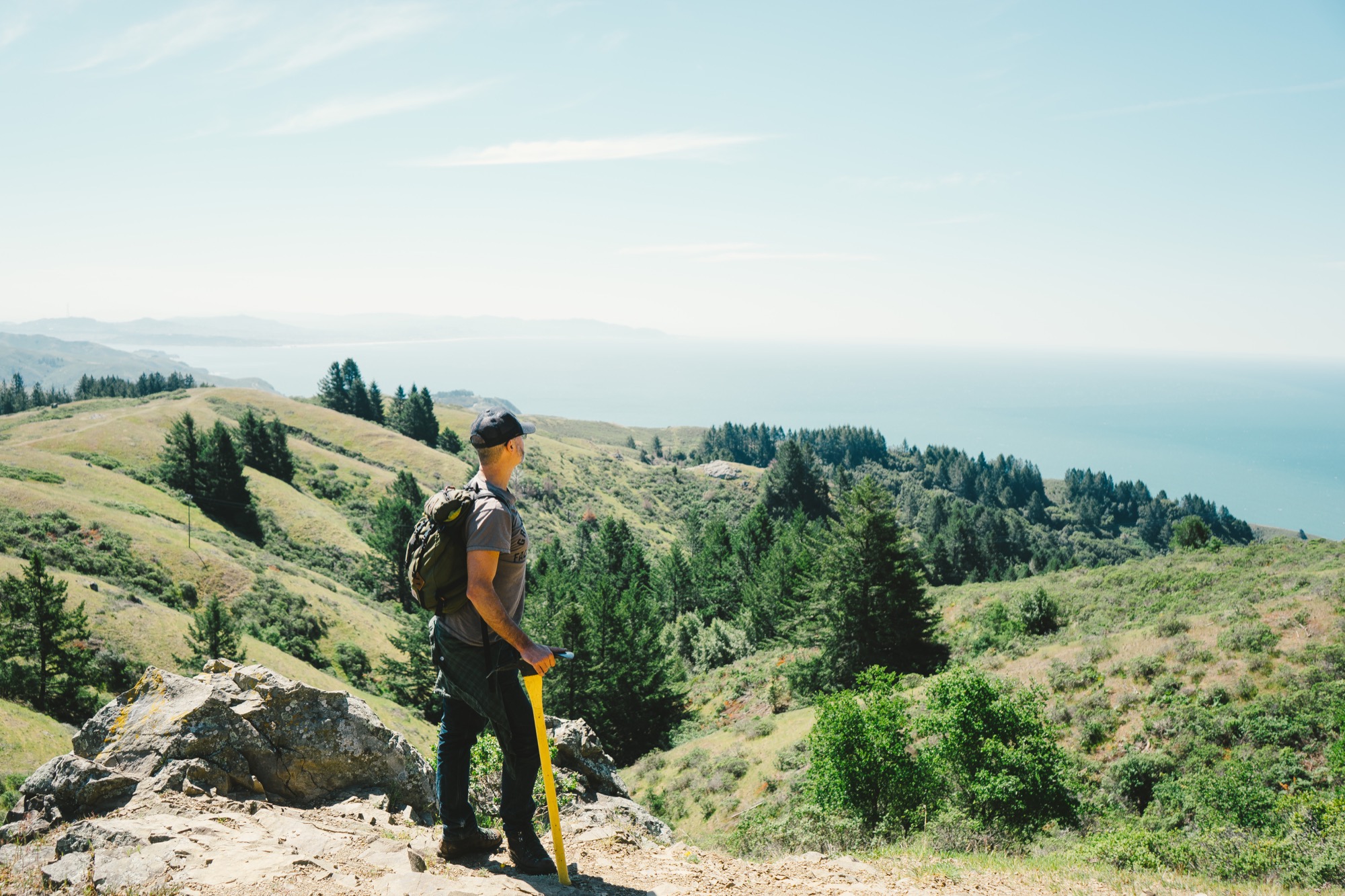
Return to the wilderness
All of us go through periods of discovery in our lives when we are searching for direction, trying to find out what defines us and how it can drive our life and work. For Newbegin, the founder and head perfumer for Bay Area-based Juniper Ridge, that discovery came after a stint on the East Coast and a return to his roots in the West, a return to the wilderness — “out there” — where he feels most comfortable and alive.
Newbegin never imagined that being “out there” would lead to a burgeoning fragrance business, with his products sold in outlets around the globe. He stumbled upon the idea after trial and error — in his life, in his passions, and in his own business.
Capturing the essence of being “out there” is the driving force for the people who run Juniper Ridge, which proclaims itself the world’s only wilderness fragrance company. Headed by Newbegin and the firm’s chief storyteller and packaging designer, Obi Kaufmann, Juniper Ridge, per its website, is “built on the simple idea that nothing smells better than the forest.”
“Built on the simple idea that nothing smells better than the forest.”
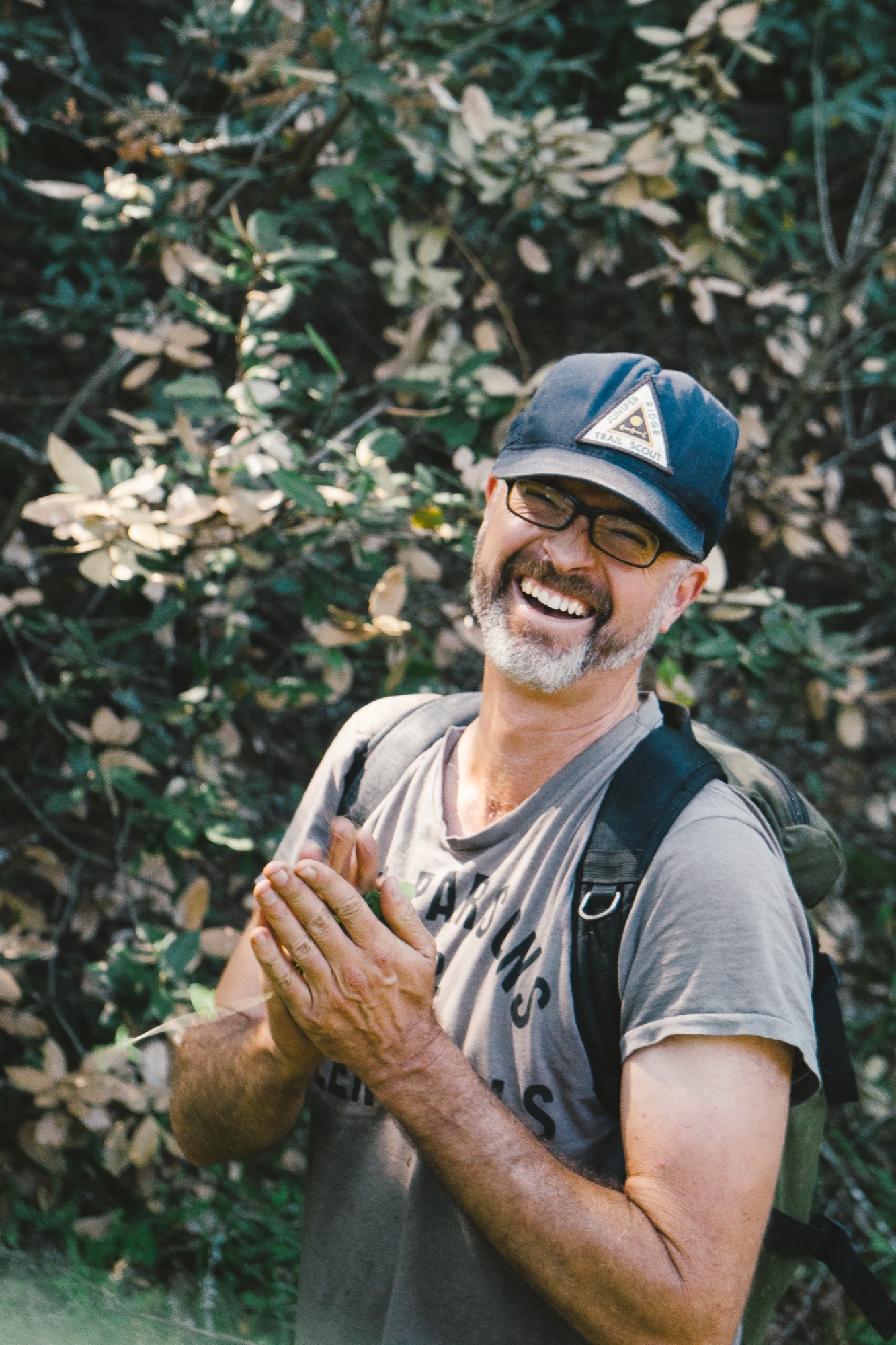
Newbegin and his team embrace this mantra through a process called wild harvesting, where they make real fragrances from the places they know and love — the trails of the rugged and diverse American West.
Their teams of hikers crawl through mountain meadows, smelling the earth, the wild flowers in bloom, or the moss covering the trees, then harvest the ingredients to capture the real scent of that land. Armed with public permits or private permissions, they gather wild flowers, plants, bark, moss, mushrooms, and tree trimmings, then distill and extract fragrance by employing ancient perfume-making techniques of distillation, tincturing, infusion, and enfleurage. These formulations vary yearly and by harvest, due to rainfall, temperature, specific location, and season.
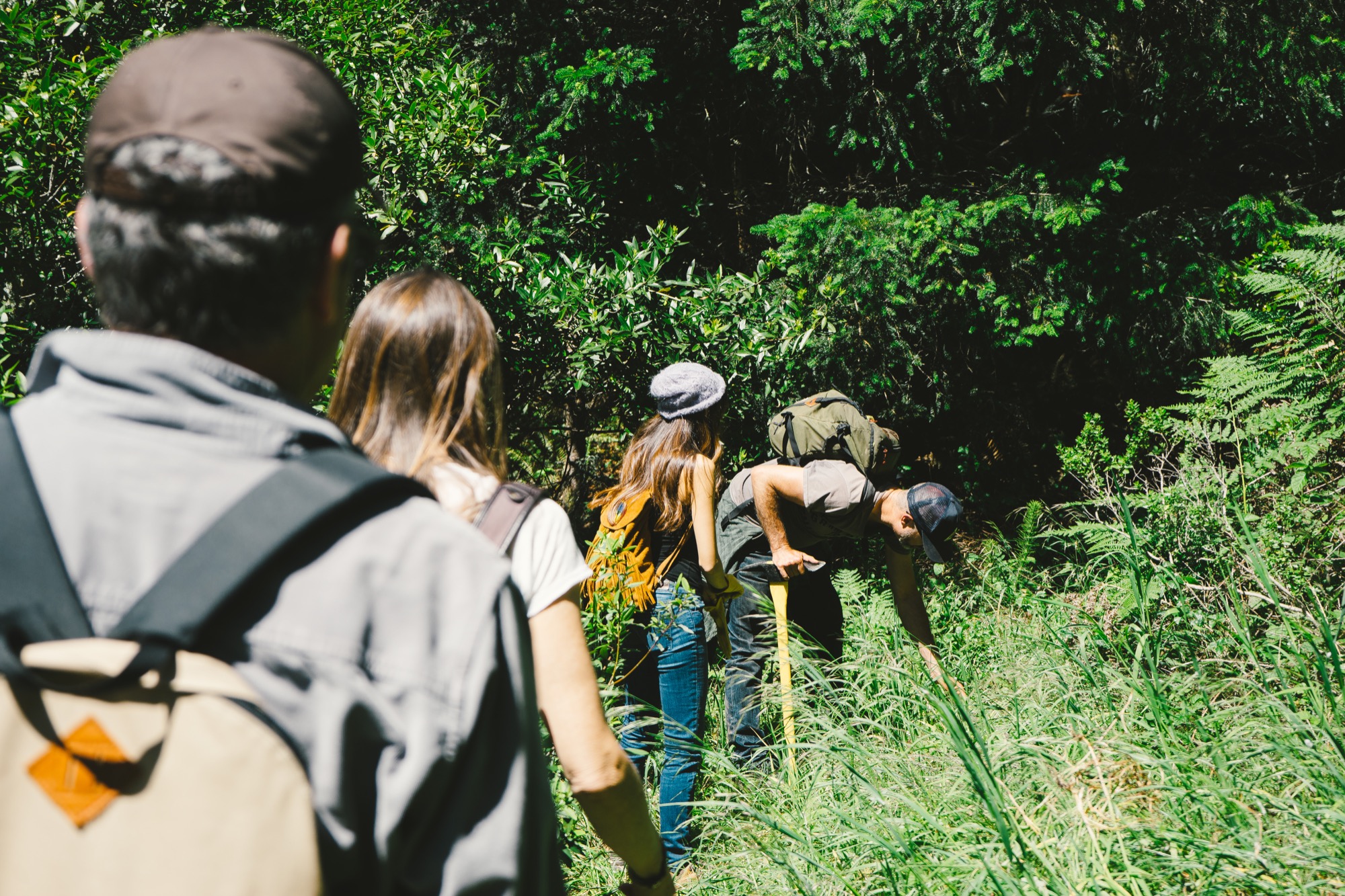
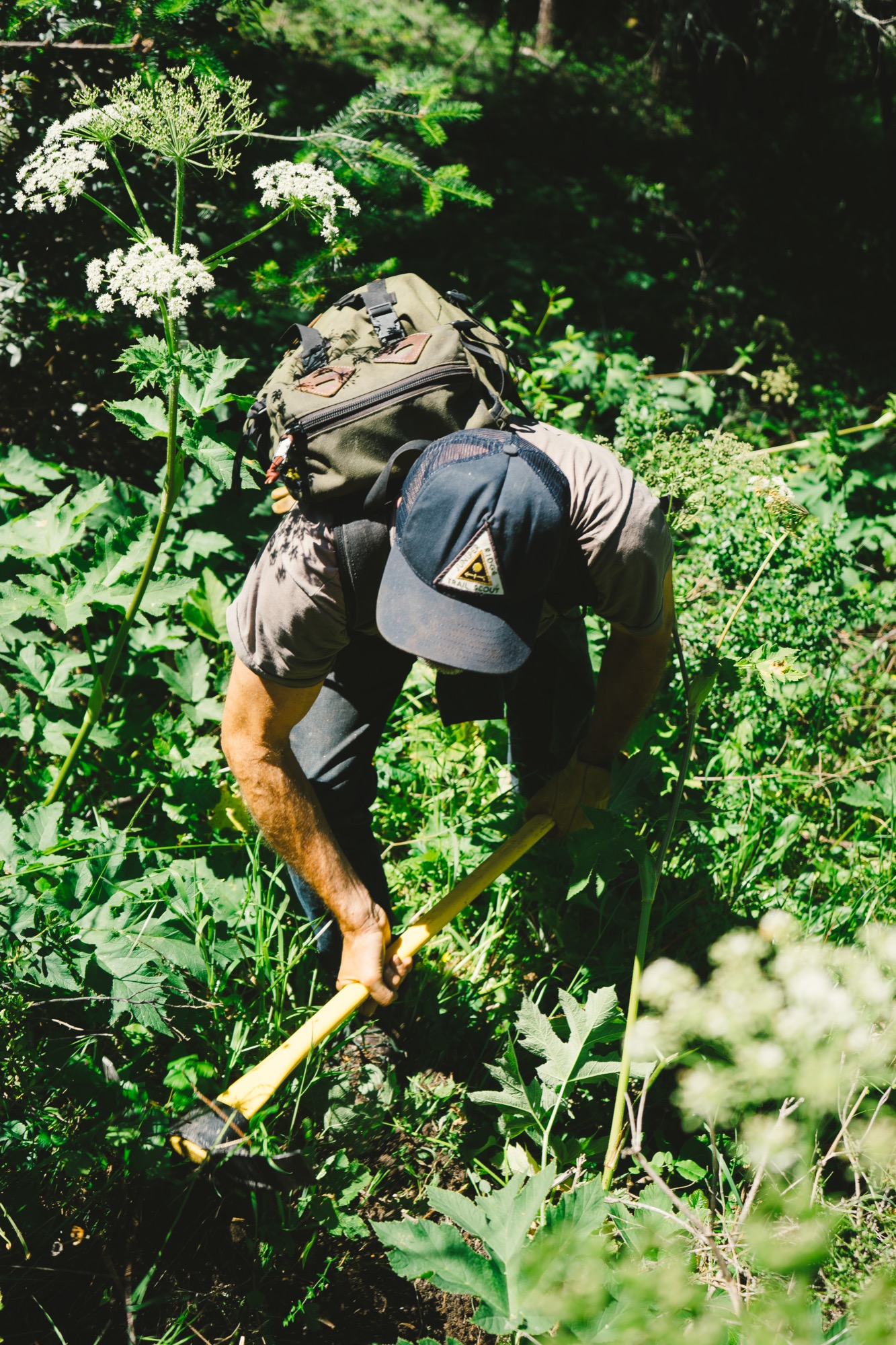
“I want people to stick their faces in the ground and just get really primitive.”
“I want people to stick their faces in the ground and just get really primitive,” says Newbegin, whose Instagram handle is @crawlonwetdirt. Yet this call to the primitive is based in fact: Our sense of smell is often called the oldest sense, the only one with a direct connection to the brain. That connection brings pleasure and sparks memory, transporting us in time and place. For the team at Juniper Ridge, the time and place is marked on every bottle of fragrance they sell. In fact, they authenticate the process of each harvest by stamping each package with a harvest number and by documenting the process through an accompanying story and photographs on the Juniper Ridge website.
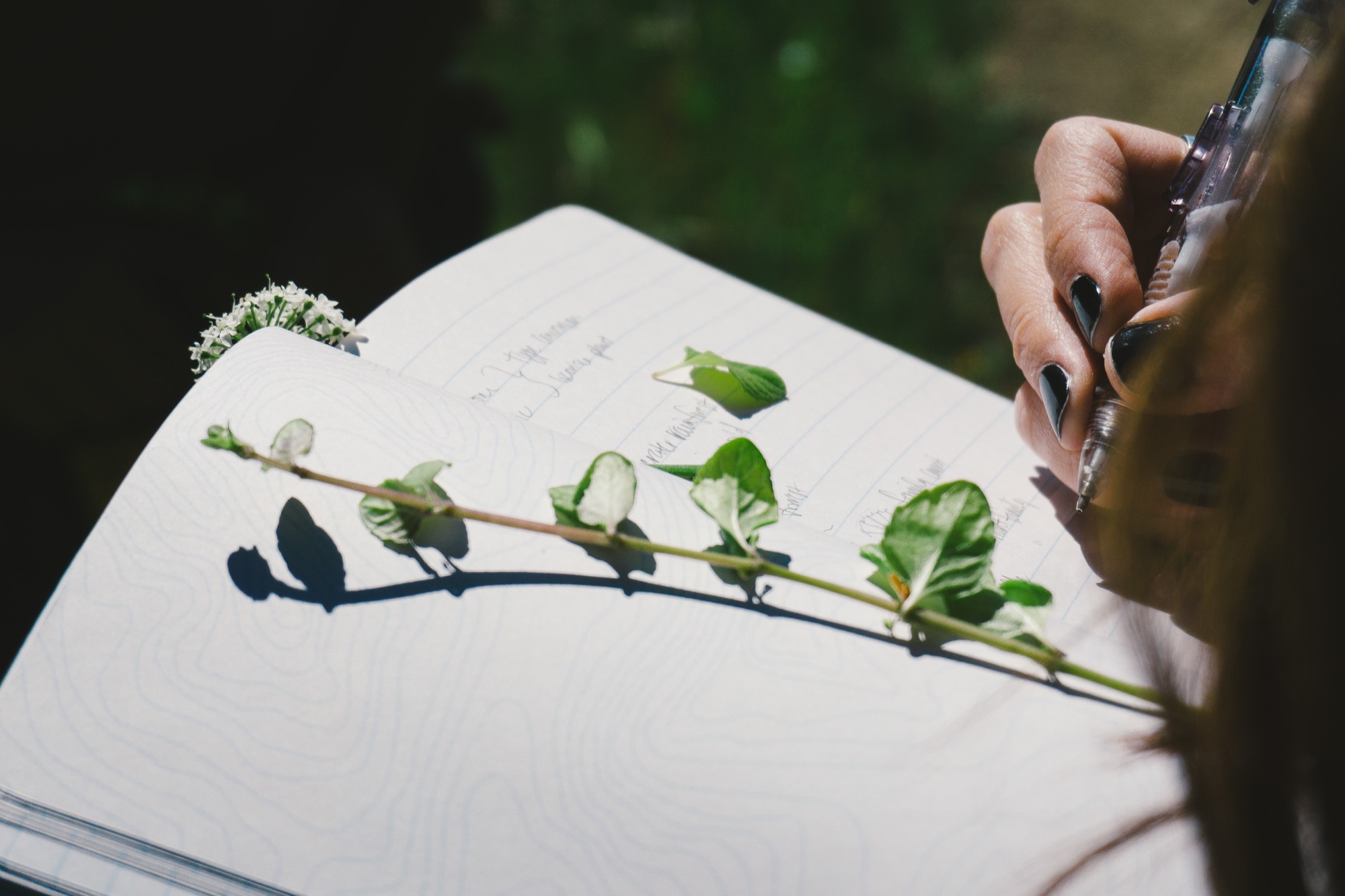
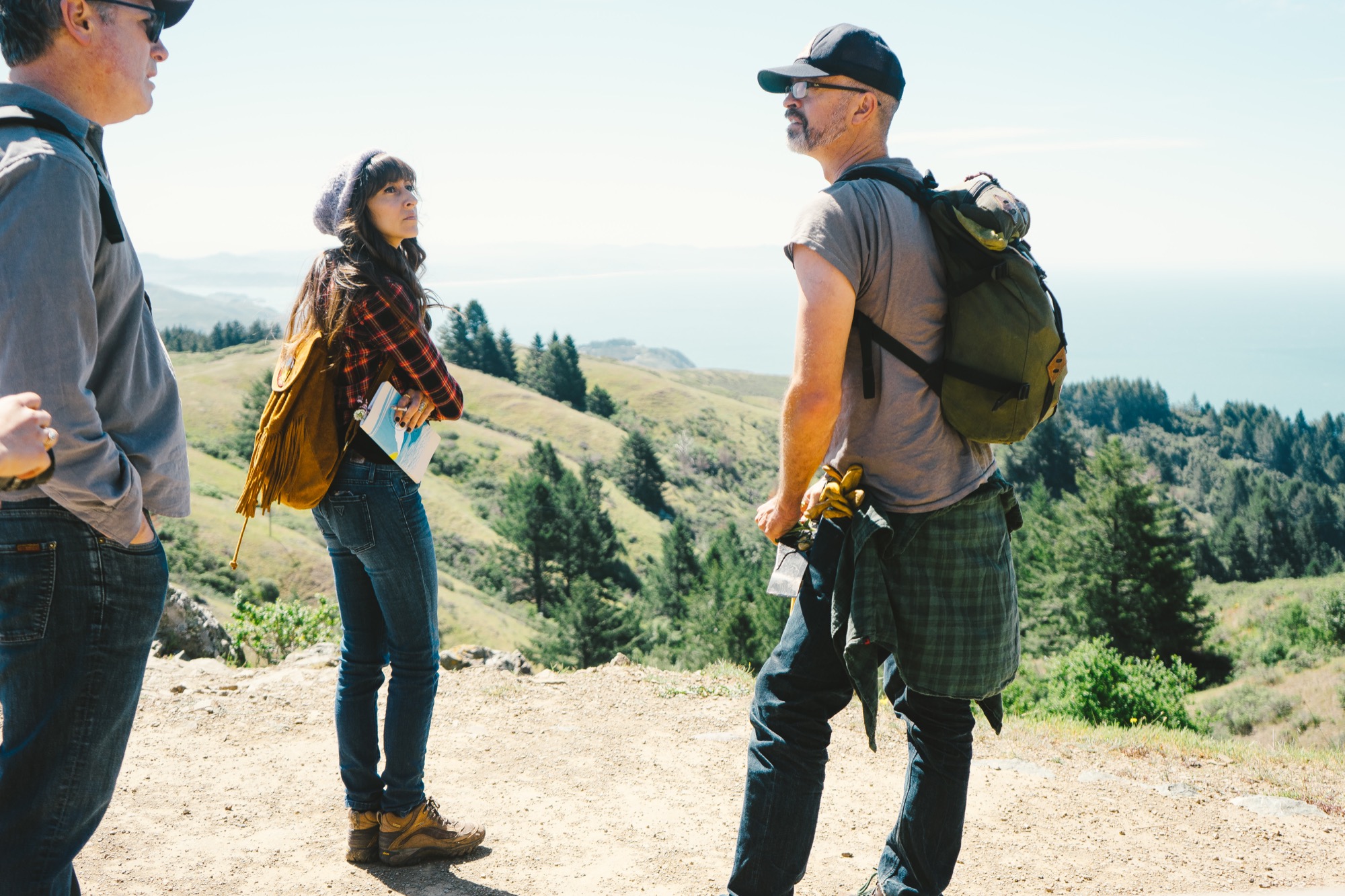
“Our muse is the place. And our job is to funnel that the best we can,” says Newbegin, pointing to a small spray bottle of Sierra Granite, a fragrance connected to California’s Sierra Nevada. “Everything in this bottle is real. Our test is always ‘Is it the real place?’ ” Some of the other places they have captured include Big Sur (California coast), Siskiyou (Oregon coast), Mojave (Mojave Desert), and Cascade Glacier (Oregon’s Mount Hood).
“Our muse is the place."
Real fragrance resonates
Kaufman notes that as the business has grown, sales have been strongest in Scandinavia and New York City. “It doesn’t matter if you’ve never been to the Sierra mountains or to Big Sur, it takes you to a place inside your own head that is common to all of us,” he says. “Ninety-nine percent of the people who buy this have never been to the Mojave Desert, but because it’s real fragrance, it resonates — this is real, it’s not Comme des Garçons, it’s not that bullshit stuff at the Nordstrom’s counter that’s made from petroleum, and that never existed on earth until ten seconds ago. Because this is real, it goes deep into our genetic past — we’re responding to something real.”
“It doesn’t matter if you’ve never been to the Sierra mountains or to Big Sur, [the fragrance] takes you to a place inside your own head that is common to all of us.”
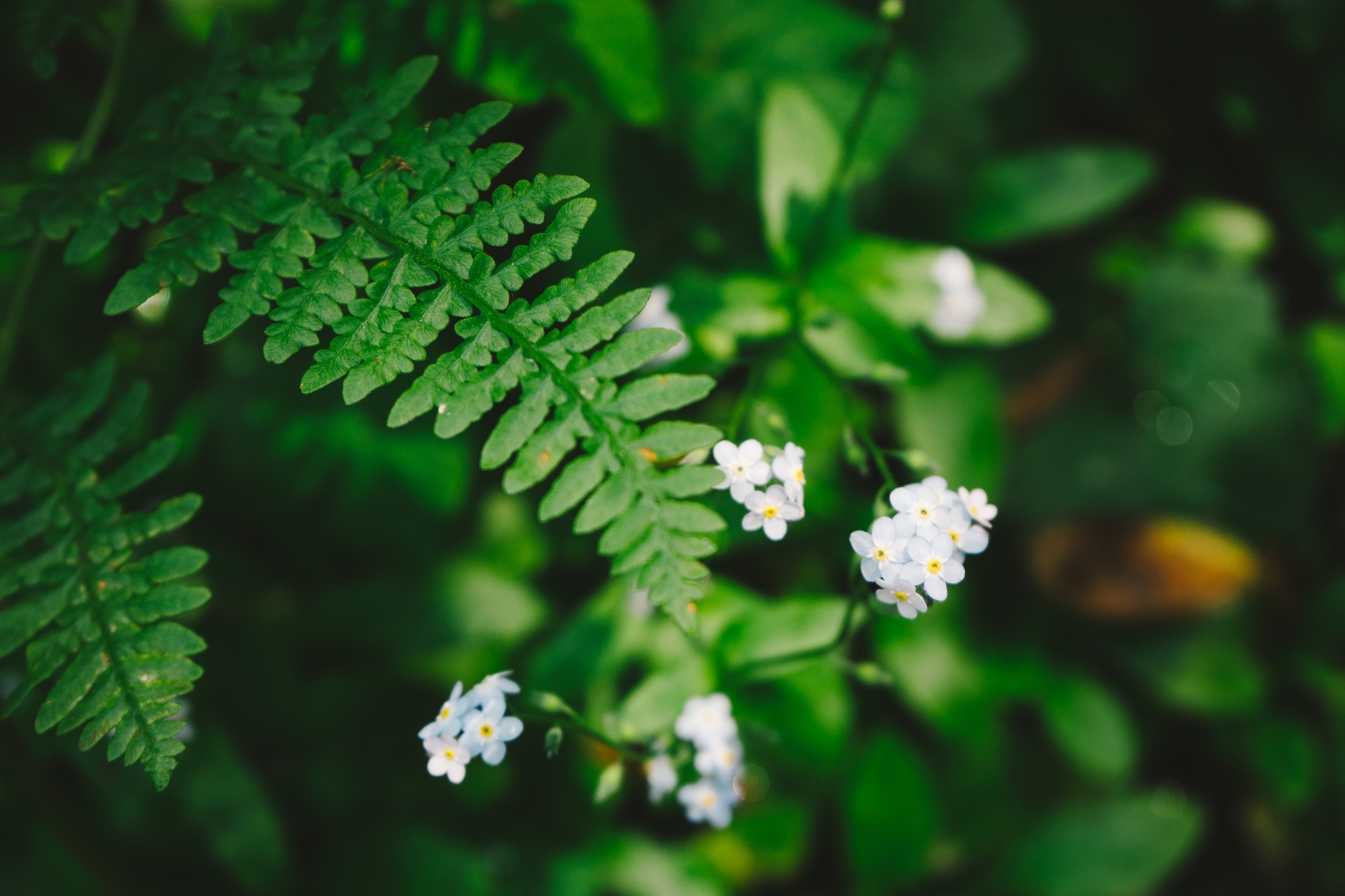
Saved by the wild
While hiking on Marin County’s Mount Tamalpais with the sometimes loquacious but unassuming Newbegin in his worn T-shirt and jeans, it’s hard to imagine that he would describe the transcendent moment of his life as a cliché. But those are the exact words he uses when he muses on the importance of the wilderness and the outdoors: “I feel like it saved my life.”
Growing up in Oregon, with Mount Hood in his backyard, Newbegin spent most of his youth hiking and backpacking. He attended college in New York but knew there was something growing inside of him, “a hunger to get back to the West and be in the mountains . . . I had camping and being outdoors in my blood. It’s a deep West Coast/western cultural thing,” he says.
With a last name like Newbegin, it seemed inevitable that he would eventually find his true calling. That happened in Berkeley, California, after a period he deems his “hippy schooling.” He took inspiration from eco-wilderness writers including Gary Snyder, John Muir, and David Brower and studied under commercial mushroom harvesters, members of native plant societies, and herbal medicine teachers.
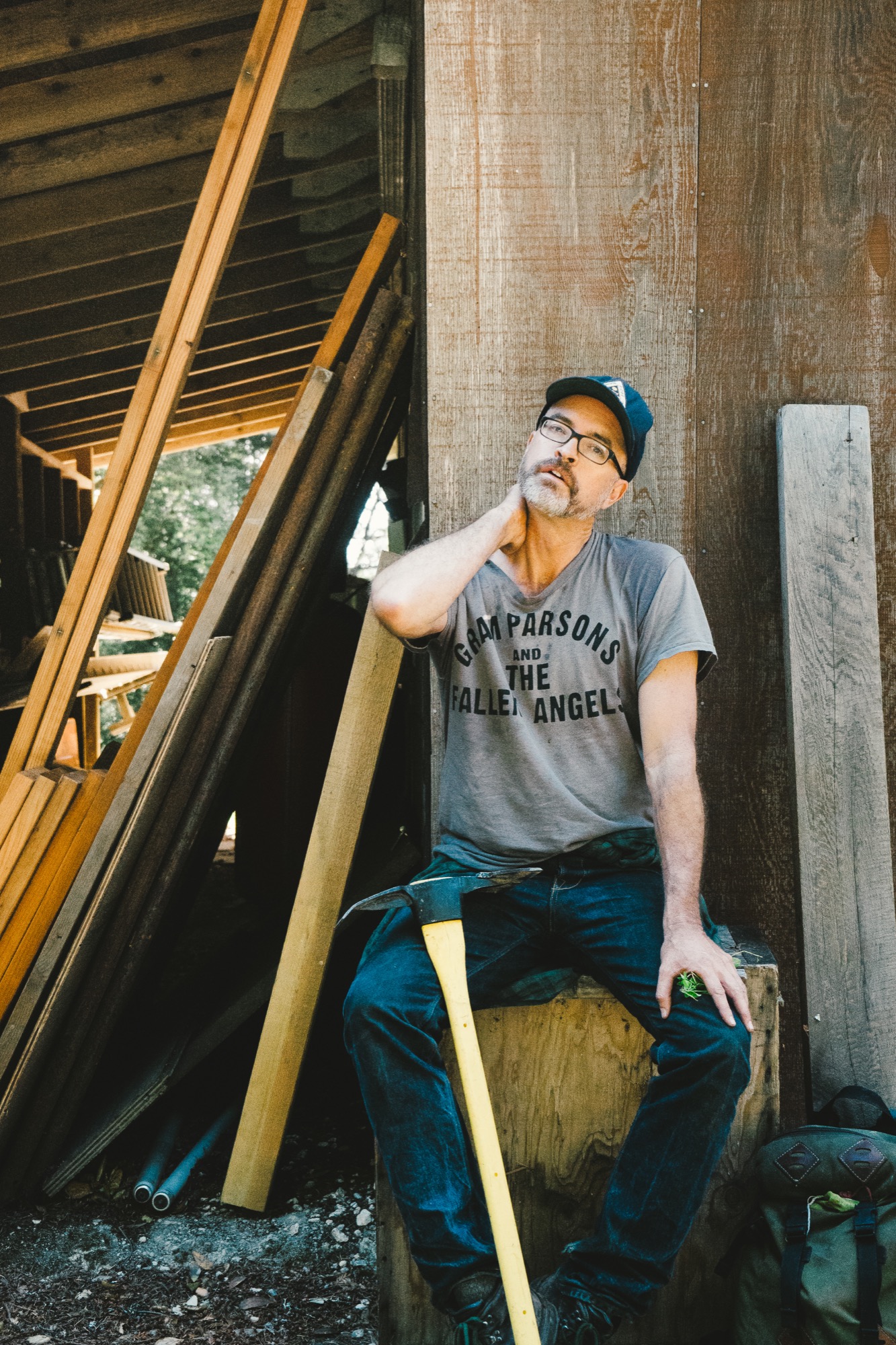
New beginning
The real turning point came as he was foraging native medicinal plants in the Sierra Nevada. “I dug my trowel into osha root, and the air just exploded with that smell and it’s like, ‘ahhh.’ It would just slay me,” he says. “I didn’t know what the stuff was. I wasn’t thinking about fragrance or anything. I just loved being out there. It just centered me. It brought me into this world where the big thing is there, and it just brought peace over me. You’re looking at plants, at trees, your map, and you smell the ground and suddenly it breaks. You’re just there. All that chatting in your brain just stops, and you’re just there.”
This was the beginning of an epiphany, but the path from being an outdoorsman to becoming a true perfumer has been sixteen years in the making. “You know how journeys are,” Newbegin says, “You just start taking your steps, and soon you start getting somewhere. And so, I started learning how to extract goo out of plants. I was going to the Berkeley Public Library and trying to figure out the old extraction techniques of how you get the goo out of the plants.”
Eventually, he was mixing that goo with other ingredients to make soap and selling it for four bucks a bar at the Berkeley Farmers’ Market. He describes encounters with his first customers: “They would say, ‘Oh my God, this is Big Sur in a soap.’ ” Sounding a bit like Hemingway, he would give them the authentic story of the day that it was harvested — “I got black sage goo on my arms, and I took a nap under this big black sage shrub and had dreams about it and woke up, and the sun was on my face, and the air was just filled with the cleanness of black sage and bees in the air.” Their response, according to Newbegin: “OK, I’ll take ten of those, right now.”
Goo business
After quickly selling out of his product, Newbegin also realized that he was vastly underpricing his offerings. Over the years, he and his team have refined not only the process to get very consistent quality, they have also learned how to price their product to create a sustainable business. Newbegin laughs when he says, “We make perfume for people who hate perfume. It’s the worst business model ever.” And yet, it is a business that is working — with retailers such as Barneys New York now carrying the product, and outlets as far away as Paris, Moscow, and Tokyo.
“We make perfume for people who hate perfume. It’s the worst business model ever.”
And Newbegin’s enthusiasm for his product and the process is still very evident. “When I hand this to someone, I think to myself, ‘Oh, my God, you’re getting something just unbelievable.’ All that green in there . . . This is what Mount Hood was like as of September fourth of last year. All that green goo, tree pitch. It’s just real. It’s just 100 percent real.”
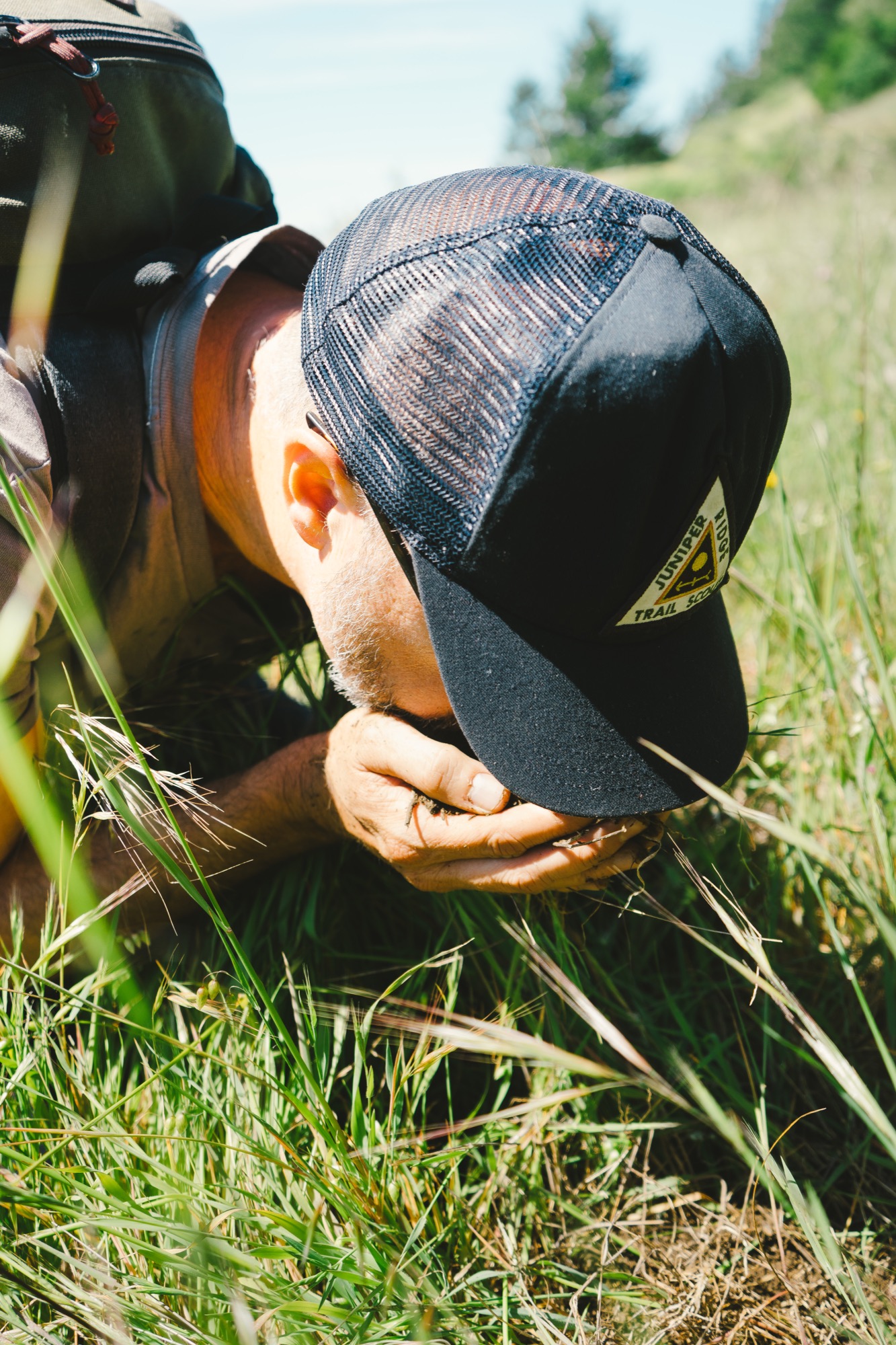
The Juniper Ridge team talks about how this realness is a stark contrast to the more synthetic nature of traditional perfumes. Those classic perfume houses employ someone who is called “a nose” to help them create unique fragrances. Globally, there are around fifty “noses” who are highly sought after for their olfactory abilities.
Although this is rarefied air that Newbegin wants no part of, he does refer to himself as “the Pied Piper of the nose.” He is quick to recall the power of the sense of smell. “My message is, use this primitive thing because it will change the person you are.” The scent of nature “is everywhere, all the time. So wake up your sense of smell,” he exhorts. “I want people to do it, not because they should, but because it’s the most sensually gratifying thing they can experience. It’s wonderful.”
Try for yourself
Newbegin’s final piece of advice: “Do what we do — get outdoors, crawl around on your hands and knees, smell the wet earth beneath your feet. Or if you’re worried about embarrassing yourself (which you should be since people don’t normally crawl around on trails), just start by crushing tree needles and plants under your nose. Stay with it, keep breathing it in. You may notice yourself feeling things, feeling something about the quietness of the place. That's the power of real fragrance.” △
"Stay with it, keep breathing it in. You may notice yourself feeling things, feeling something about the quietness of the place. That's the power of real fragrance.”
